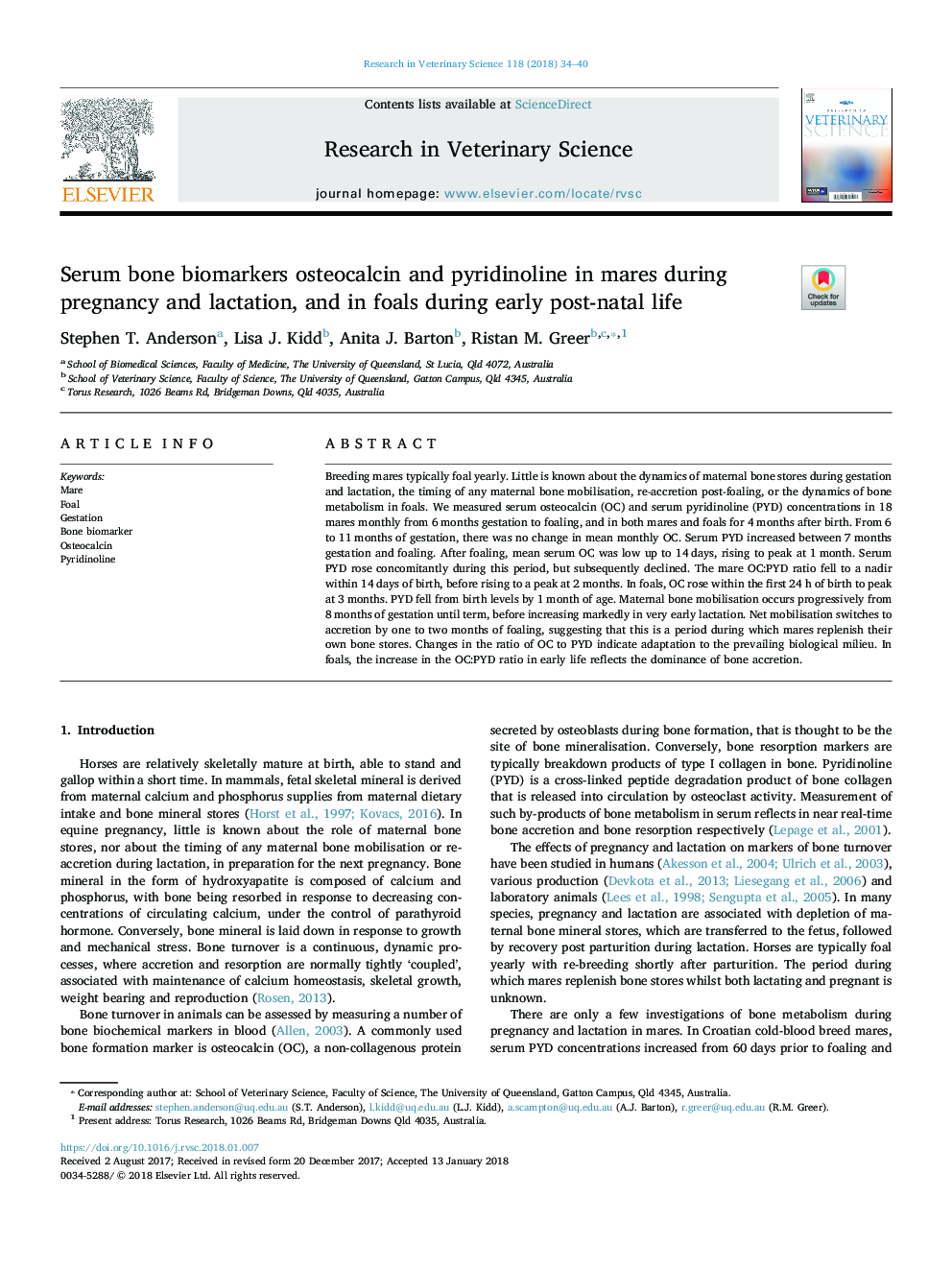| Article ID | Journal | Published Year | Pages | File Type |
|---|---|---|---|---|
| 8503980 | Research in Veterinary Science | 2018 | 7 Pages |
Abstract
Breeding mares typically foal yearly. Little is known about the dynamics of maternal bone stores during gestation and lactation, the timing of any maternal bone mobilisation, re-accretion post-foaling, or the dynamics of bone metabolism in foals. We measured serum osteocalcin (OC) and serum pyridinoline (PYD) concentrations in 18 mares monthly from 6Â months gestation to foaling, and in both mares and foals for 4Â months after birth. From 6 to 11Â months of gestation, there was no change in mean monthly OC. Serum PYD increased between 7Â months gestation and foaling. After foaling, mean serum OC was low up to 14Â days, rising to peak at 1Â month. Serum PYD rose concomitantly during this period, but subsequently declined. The mare OC:PYD ratio fell to a nadir within 14Â days of birth, before rising to a peak at 2Â months. In foals, OC rose within the first 24Â h of birth to peak at 3Â months. PYD fell from birth levels by 1Â month of age. Maternal bone mobilisation occurs progressively from 8Â months of gestation until term, before increasing markedly in very early lactation. Net mobilisation switches to accretion by one to two months of foaling, suggesting that this is a period during which mares replenish their own bone stores. Changes in the ratio of OC to PYD indicate adaptation to the prevailing biological milieu. In foals, the increase in the OC:PYD ratio in early life reflects the dominance of bone accretion.
Related Topics
Life Sciences
Agricultural and Biological Sciences
Animal Science and Zoology
Authors
Stephen T. Anderson, Lisa J. Kidd, Anita J. Barton, Ristan M. Greer,
